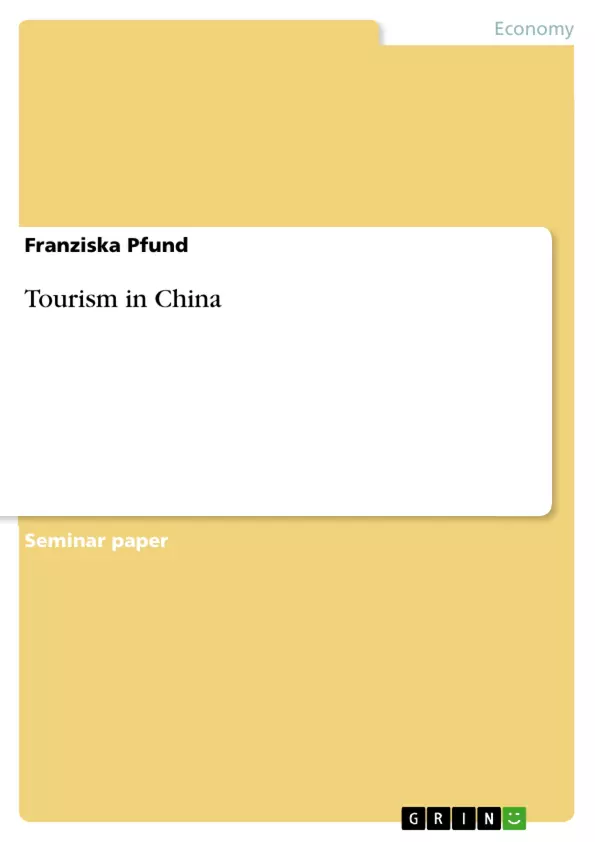Since the adoption of the policies of reform and the opening to the outside world,
China’s tourism has entered a stage of rapid development. Being a country rich in
tourism resources, it has become a demanded destination in Asia for tourists from all
over the world, but also domestic tourism is growing vigorously.
This paper is divided in four parts. Chapter one will give an insight into important
factors concerning China’s tourism industry and explain its economical and political
situation. Besides, investments in tourism will be explained. Chapter two illustrates
China’s tourism market, considering tourism operation and management, crucial
regulations, infrastructure development but also human resources as well as media
and advertising. Chapter three points out the impact of the World Tourism
Organization on China’s tourism industry and illustrates through which projects the
organization has helped to further development of tourism. In chapter four the main
points will be summarized.
Table of Contents
- FACTS & FIGURES ABOUT CHINA
- GENERALITIES
- INHABITANTS
- POLITICAL & ECONOMIC SITUATION
- CHINESe InvestmenTS IN TOURISM
- THE CHINESE TOURISM MARKET
- GENERAL DEVELOPMENT
- Inbound Tourism
- Domestic Tourism
- POLICIES & REGULATIONS
- TOURISM OPERATION AND MANAGEMENT
- Hotels
- Travel Organizations & Services
- Quality Supervision Management
- INFRASTRUCTURE DEVELOPMENT
- Railways
- Highways
- Civil Aviation
- Waterways
- HUMAN RESOURCES
- MEDIA & ADVERTISING
- GENERAL DEVELOPMENT
- WORLD TOURISM ORGANIZATION
- MISSION
- PROJECTS IN CHINA
- Technical Assistance Missions
- Technical Cooperation Projects
- Hotel Classification System
- World Trade Centre Staff Development
- Tourism Master Plans
- SEMINARS AND CONFERENCES
- SUMMARY & FUTURE PERSPECTIVES
Objectives and Key Themes
This paper explores the rapid development of tourism in China since the adoption of reform and opening policies. It aims to provide an in-depth analysis of the country's tourism industry, encompassing key factors, market dynamics, and the role of the World Tourism Organization in shaping its growth.
- Economic and political context of China's tourism industry
- Development of China's tourism market, including inbound and domestic tourism
- Tourism infrastructure and human resource development
- The influence of the World Tourism Organization on China's tourism sector
- Future perspectives of tourism in China
Chapter Summaries
- Chapter one provides an overview of China's tourism industry, highlighting its unique geographical features, rich history, and the significance of its political and economic situation. This chapter also examines investments in tourism, setting the stage for understanding the industry's growth trajectory.
- Chapter two delves into the Chinese tourism market, covering its general development, including inbound and domestic tourism trends. It further investigates policies and regulations, tourism operation and management, infrastructure development, and human resource considerations. The chapter also explores the role of media and advertising in promoting tourism.
- Chapter three focuses on the World Tourism Organization's impact on China's tourism industry. It examines the organization's mission and its various projects implemented in China to support tourism development. These projects include technical assistance missions, technical cooperation projects, hotel classification systems, World Trade Centre staff development, and tourism master plans.
Keywords
Tourism, China, tourism industry, economic development, political situation, tourism market, inbound tourism, domestic tourism, infrastructure, human resources, World Tourism Organization, technical assistance, tourism master plans, future perspectives.
- Quote paper
- Franziska Pfund (Author), 2002, Tourism in China, Munich, GRIN Verlag, https://www.grin.com/document/58945



